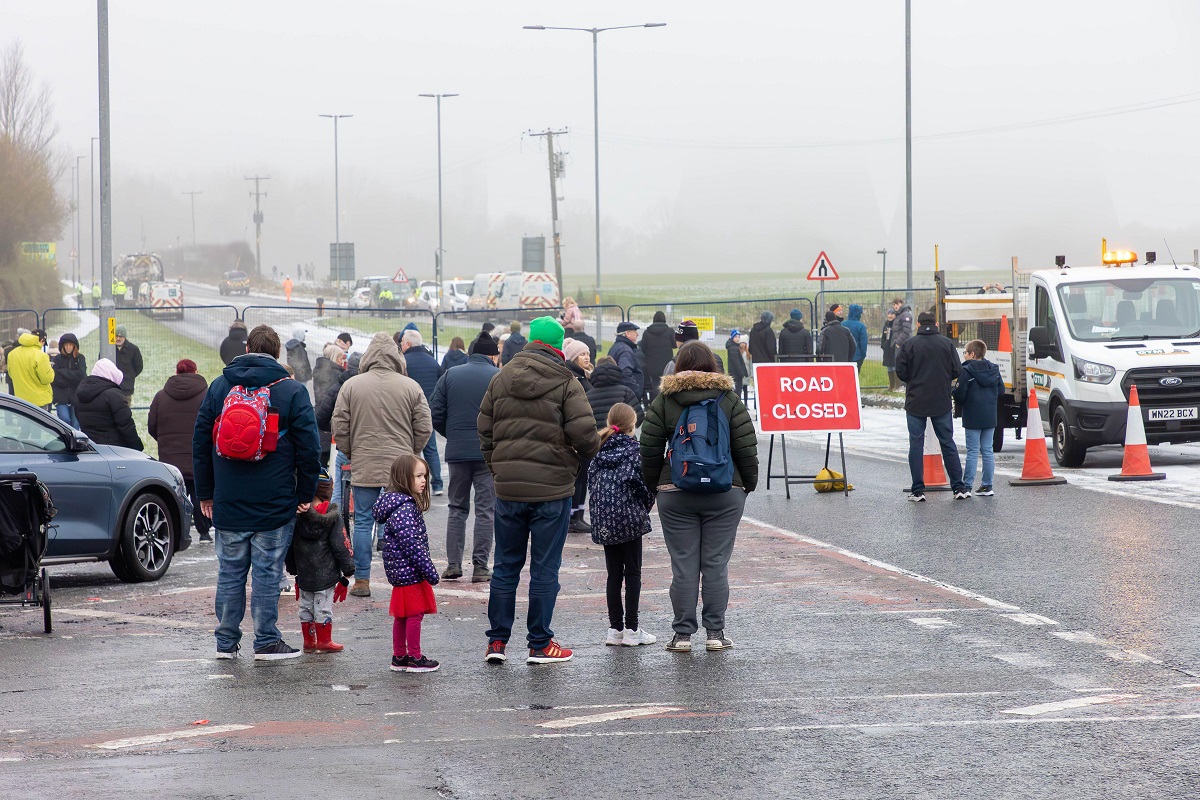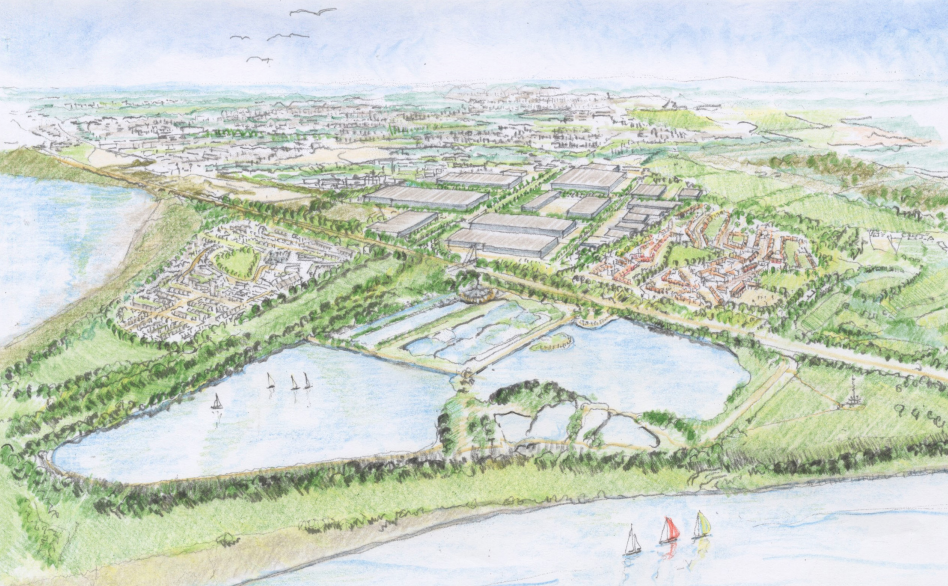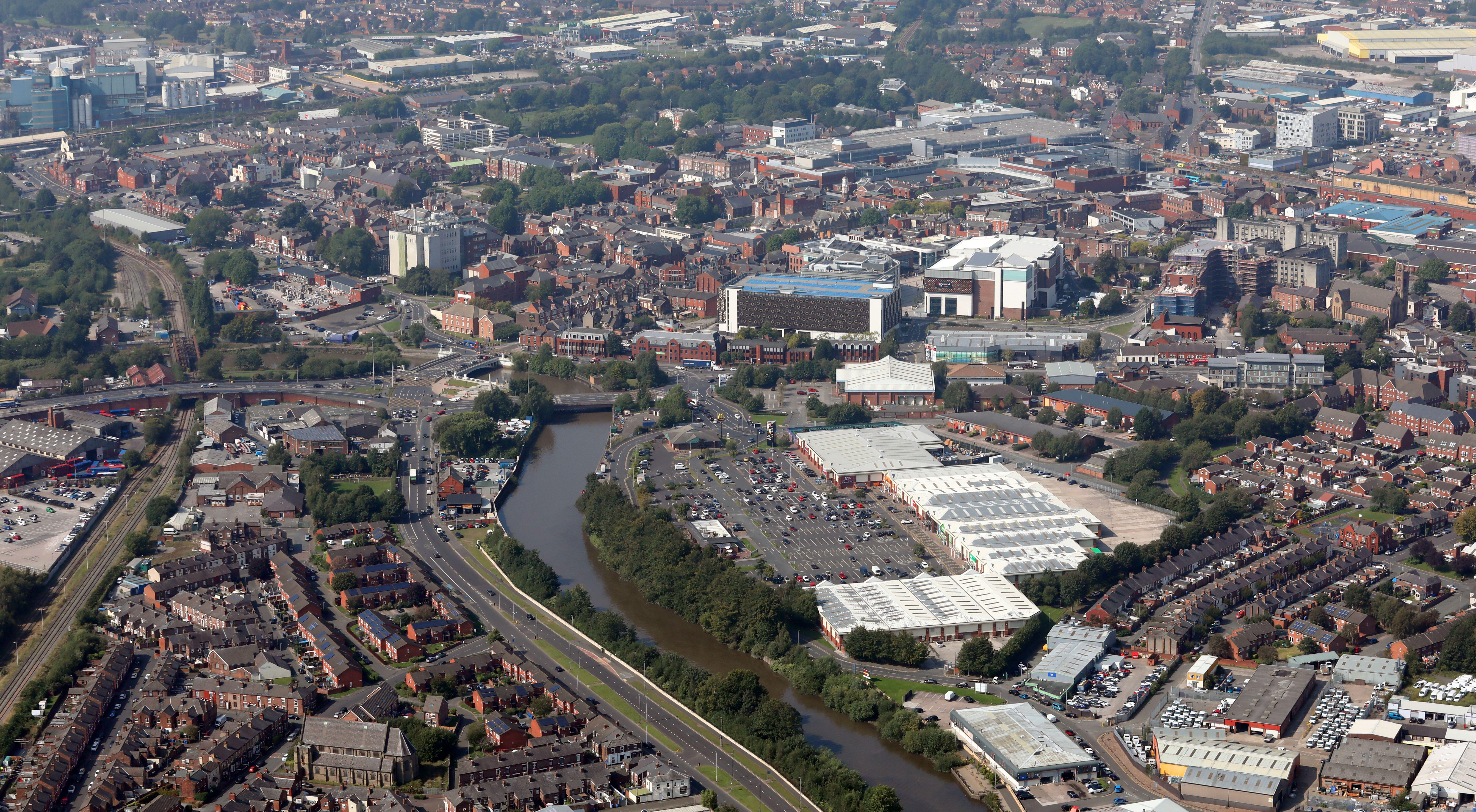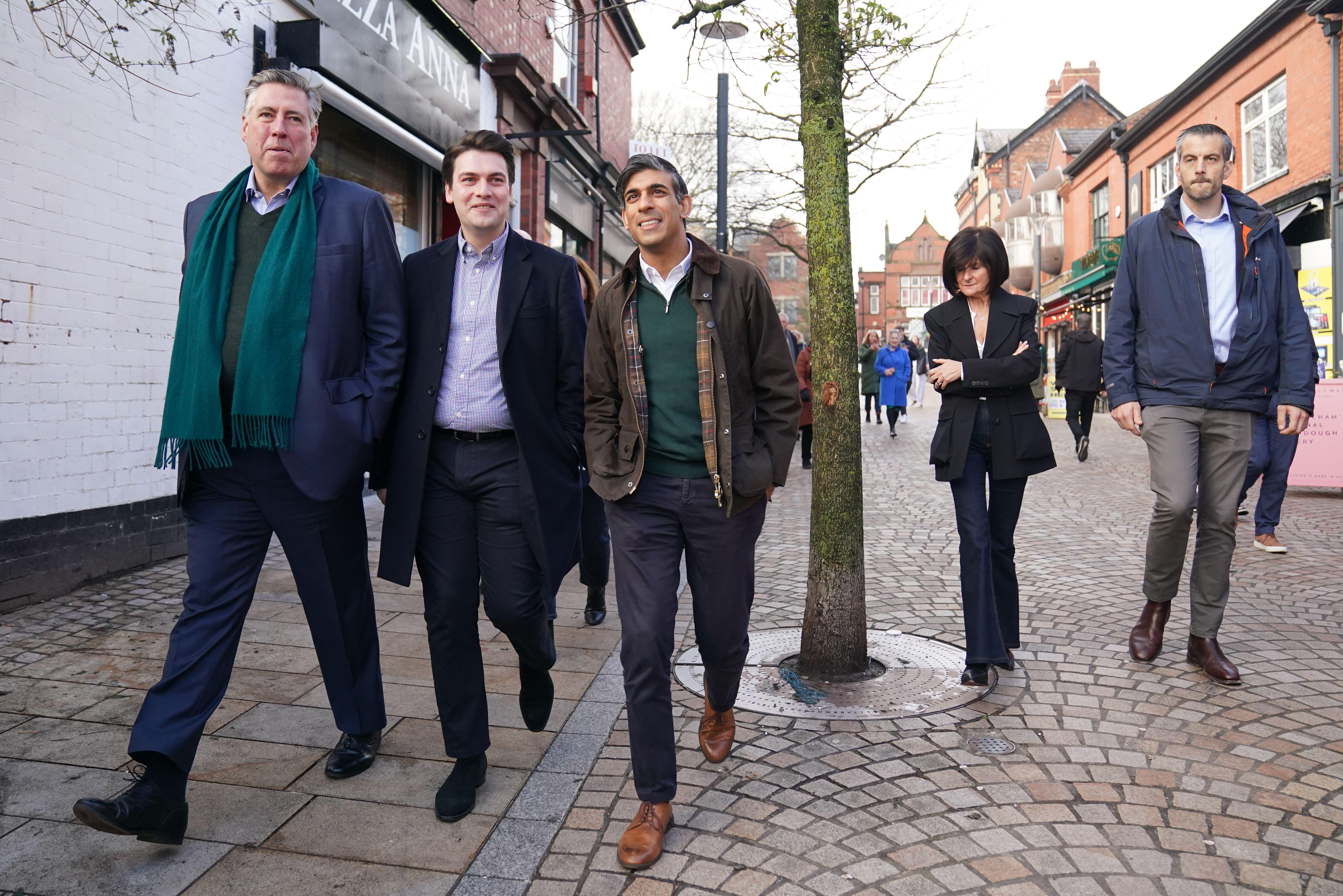Fiddler's Ferry's place in Warrington's past, present and future
Eight cooling towers were behemoths on the horizon that signalled the arrival home for Warringtonians for decades. Now, with four of them lost and the demolition of those remaining not far behind, we look at the past and the future of the site and hear from those fighting to save at least one of Fiddler’s Ferry’s famous towers
For around half a century, Fiddler's Ferry’s cooling towers loomed over surrounding towns like Warrington and Widnes, with thick smoke emerging as workers turned coal into electricity for the National Grid.
The concrete structures stood tall by the banks of the River Mersey, perceived both as local landmarks and polluting eyesores, and were recognisable as far away as the Pennines and the Peak District.
They provided a backdrop to the Stone Roses’ iconic Spike Island gig, appeared in the credits of BBC sitcom Two Pints of Lager, and for locals, signalled the arrival home. They also provided power to millions of homes and employment to hundreds from the local community before being decommissioned in 2020.
Those towers dominated the landscape for decades but, in December, four were brought crashing down in a matter of seconds. The remaining four, along with everything else on the site, are also due to be razed and will likely be gone by 2026.
What comes next is seen as a “once in a generation” opportunity. Almost 2,000 homes are planned, along with industrial and logistics buildings, a primary school, green space and a GP surgery.
History of the site
If you go back far enough into the area’s history, you’ll find the legend of blacksmith Robert Byrch, who is said to have baited and killed a griffin which was ravaging the local livestock. Byrch’s forge is said to have been located on what is now Fiddler’s Ferry and Byrch was said to have been carried all the way to Halton Hill after stabbing the creature.
In more recent history, the site was hit by two bombs during World War II though neither exploded and were later removed safely. In 1962, the power station was first proposed and took its name from the nearby Ferry Inn, now known as the Ferry Tavern.
It became fully operational in 1973 and at its height, it supplied 2,000 megawatts (MW) of electricity each day – enough to power around two million homes. That process involved burning 16,000 tonnes of coal and using 196m litres of water from the River Mersey every day.
The beginning of the end came in 2016, when the station had already been loss making for two years and Amber Rudd, who was then responsible for the Department of Energy and Climate Change, announced that all coal-fired power plants would close by 2025.

Fiddler's Ferry Power Station in 1987
In 2019, when the plans for the closure of the last tower were announced, Unite regional officer Graham Williams said: "This is very grim news for the workforce… as well as being a devastating blow for the economy in the North West."
He added: "While we recognise that coal-fired electricity generation is being phased out, Fiddler's Ferry plays a significant role in providing back-up when there are surges in energy demand during cold snaps and the National Grid is seeking additional supplies."
Ultimately, the station was out of use by 2020 and demolition plans were brought forward two years later.
Demolition Day
In December 2023, thousands gathered in various locations to watch the momentous demolition of the four towers, only to find views significantly hindered by foggy conditions. Video footage showed how it took just seconds to turn the 114m-tall behemoths into piles of rubble.
Among those watching the demolition was ex-electrician Keith Johnson. Speaking to ITV News that day, he said: “It was such a big project of its time. The Central Electricity Generating Board, as it was in those days, was building quite a number of stations similar to this around the country.
“I do feel a bit sad about it. I saw the birth of them and to see them come down is the end of an era.”

Thousands of people gathered around the exclusion zones to watch the demolition of the four North towers at Fiddler's Ferry Power Station
Kieran Tames, development director at Peel NRE, said: “We are incredibly happy that the demolition of the four northern towers at Fiddler’s Ferry was successful. This vital stage of the development helps pave the way for future investment in Warrington, Halton, and the wider communities.”
While the consensus is that such unused brownfield sites need to be redeveloped, not least due to the country’s housing crisis and ever-rising population, sadness remains for many. In Warrington town centre, retired postman Chris told The Warrington Lead: “It will be sad when it’s all gone. It’s been there for so long and it was so important.
“I knew people who worked there but that all stopped a few years ago. They say you must look forward with these things and we need more houses for the young people.”
Jane, a retail worker, said: “My sons used to play football by the towers every week and my family look out for it when they come to visit because it means they’re close!”
One group which argues such towers should be saved is the Twentieth Century Society. The group, set up in 1979, campaigns to save “outstanding buildings and designs that have shaped the British landscape”.
On social media, it described the demolition as a ‘sad day’, describing it as “another monument to our national industrial heritage erased”. Oli Marshall, the group’s campaign director, said it now accepted that saving any of the towers was unlikely but warned the country risks losing a vital part of its history.
He told The Warrington Lead: “We’ve been running a campaign for the last two or so years around towers of this kind. They are fast going. At the current rate, by the time the decade’s out they will be all gone.”
According to Marshall, groups such as the Victorian Society and the Georgian Society faced similar difficulties in preserving buildings which are now heralded.
He said: “What you often find when these towers are demolished is there’s a profound sense of loss in the community. Not just from the people who worked there, but for those who saw them everyday from the rail or car.
“The engineering on these towers is extraordinary. Most of them are 300ft tall, big enough to fit all of St Paul’s Cathedral inside, but the concrete is only six inches thick. They’re like an eggshell.”
Elsewhere in the world, such towers have been repurposed and built into more modern attractions such as theme parks, venues for music festivals, and viewing posts. The society continues to lobby for at least one set of cooling towers in the country to be saved while its president Catherine Slessor has written that such demolitions leave Britain “on the brink of losing a unique part of its industrial heritage”.
She said: “In the rush to sweep away the ‘relics' of an outdated era, there is also the risk that a unique part of the nation’s industrial heritage will be irretrievably lost.
“Distinguished by their curvaceously concave geometry, cooling towers have become familiar interlopers in Britain’s pastoral idyll. Like industrial versions of Stonehenge, these modern megaliths bestrode the horizon, enlivening car and train journeys.”
What comes next
The wider Fiddler’s Ferry site is now owned by developer The Peel Group and stretches well beyond the footprint of the cooling towers to cover some 800 acres. Demolition is expected to be completed by 2026 and a masterplan for the site is hoped to be completed by 2040.
It is seen as an extremely important part of Warrington Borough Council’s future development needs and is described by Peel as “one of the largest brownfield regeneration projects in the Mersey region”.
Peel’s masterplan states: “In its place will arise a new employment hub and two new urban villages set within an extensive parkland landscape, that will engage sensitively with the Mersey riverside and link with the Widnes Waterfront area.”
It is estimated that the site could accommodate 6,750 new jobs once complete, with Phase One alone claimed to be worth £126 million per year to the local economy when complete, while creating 452 construction jobs each year across the four- year build programme.

Plans for Fiddler's Ferry
Overall, the site is divided into two phases north and south of the railway line.
Phase one addresses everything north of the railway and will include all 4m sq ft of the employment hub and the first of the two residential neighbourhoods with a minimum of 860 new homes and additional community facilities. It is hoped this will be completed by 2033.
Phase Two forms a second residential Neighbourhood with 900 homes along with a new parkland area at the former lagoons. This is planned to begin around 2031 and be completed by 2040.
Kieran Tames, Development Director for Peel NRE, the arm of the group responsible for said: “We recognise the importance the former power station has had in the area for over the past 50 years, and we want to invite local people to have their say on securing the future development of the site.
“Our regeneration plans for Fiddler’s Ferry will create new opportunities for investment, jobs and family housing for Warrington, Widnes, Halton and surrounding communities.
“Our masterplan will create over 2,100 jobs and this first phase addresses a chronic shortage of modern employment space in Warrington and Widnes and will reduce the need for people to travel longer distances to work by helping companies to invest locally. We will also work with bus operators to improve transport to the development.”
The Lead is now on Substack.
Become a Member, and get our most groundbreaking content first. Become a Founder, and join the newsroom’s internal conversation - meet the writers, the editors and more.





